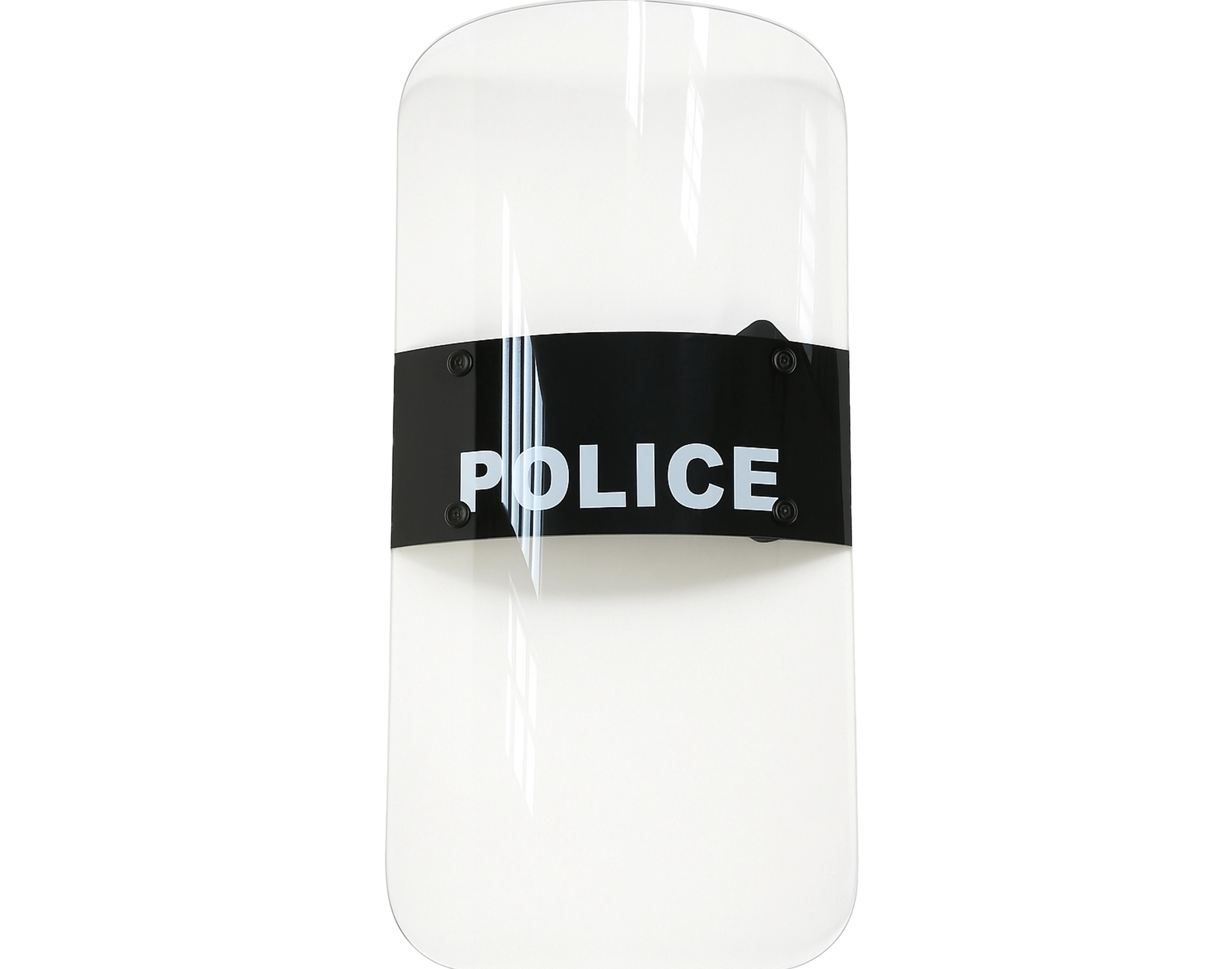Hard Shell’s Anti-Riot Shield offers effective non-lethal protection during crowd control operations. Made from lightweight, shatterproof polycarbonate, it withstands impacts from projectiles, ensuring safety for police and security personnel.
The Hard Shell Anti-Riot Shield offers lightweight, shatterproof protection for effective crowd control. Built to withstand impacts from projectiles, stones, and other threats, it ensures reliable safety for police, military, and security personnel.
UV stabilized polycarbonate sheet with 95% transparency.

Hard Shell Anti-riot shield provides military and law enforcement personnel with an effective non-lethal crowd control solution. Hard Shell Anti-Riot shield offers protection to Police and Security personnel working in riot situations. The shield is engineered from lightweight and shatterproof polycarbonate. It offers high impact protection and ensures absolute resistance to impact, violence, stones, iron marbles and birdshot.
An anti-riot shield acts as a barrier to keep security or law enforcement officers safe during civil unrest. Its construction facilitates it to resist blows and physical attacks. The shield's functions include upholding law and order and shielding people from possible threats in times of riot or crowd control scenarios.
Anti-riot shields are not designed and constructed to stop bullets. They provide defense against blunt force, hurled objects, and melee attacks. They don't have the ballistic resistance required to resist gunfire. Specialized shields with ballistic materials integrated into their construction are necessary for ballistic protection.
Although difficult, it is possible to breach an anti-riot shield. These shields are made of strong materials that can withstand force and impact. Using them for unintended purposes or using them for an extended period of time could eventually harm the shield's structure.
Hard Shell anti-riot shields are made of UV stabilized polycarbonate sheet with 95% transparency. Due to the blend of strength and flexibility offered by these materials, the shield can survive blows from physical attacks, and blunt force during riots.
An anti-riot shield's weight varies based on its materials and design. Hard Shell's anti-riot shields weigh 2.60 kgs ± 100 gms, and can vary based on the sizes and level of protection requried.. The selection of durable yet lightweight materials, such as polycarbonate, guarantees that the shield effectively protects law enforcement or security personnel while facilitating ease of maneuverability.
Local laws determine whether anti-riot shields are available to citizens. These speciality shields are essentially only allowed for use by law enforcement or security professionals in most regions. Adherence to certain legal requirements and licensing may be necessary for the purchase of such equipment.
Law enforcement and security personnel are the major users of anti-riot shields. These specialised shields are used to manage civil disturbances by offering a barrier against physical attacks during riot control scenarios.
Yes, police commonly use anti-riot shields as essential equipment for crowd control and managing civil unrest. Their durability and design play a critical role in guaranteeing safety and efficacy of police in riot scenarios.
Polycarbonate, a durable and transparent thermoplastic material, is commonly used to make anti-riot shields.
End to end control
Precision Crafted for Your Needs
A Global Shield of Confidence
Sustainability at the Core of Safety